This is a continuation of a previous post, with student profiles of the six current COA students that have received Maine Sea Grant Undergraduate Scholarships. This post has two goals, first to advertise this scholarship to COA undergraduates, which comes with a $500 award from Maine Sea Grant and a matching amount from COA, and second, to give the students a chance to talk about what work they have done and are doing at the college. This year’s application is due again later this spring (May 20th), and the application information can be found here.
The second goal is to highlight some of the work that COA students are doing. This post focuses on the recipients who have done their shore-based marine science work on the mainland, either in Maine or in the Yucatan, or both, and all three happened to have spent a term shipbound as part of a Sea Semester program. All three are graduating this year: Massimo Hamilton, Emily Rose Stringer, and Katie Culp.
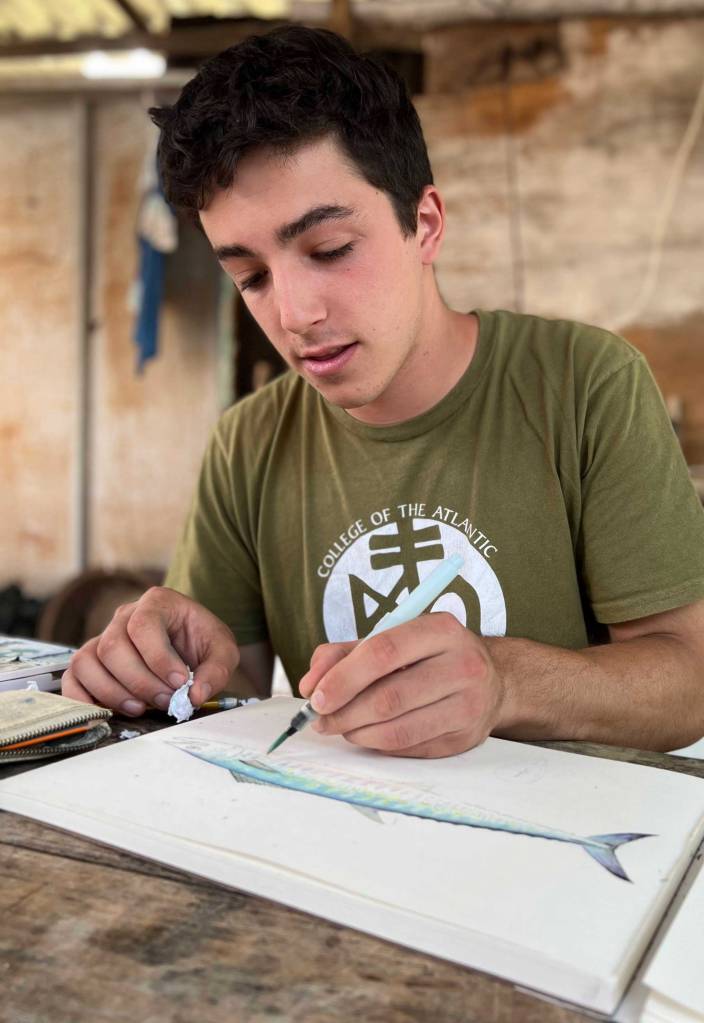
Massimo Hamilton ’24. I love fish, fishing, and seafood. I grew up by a beautiful stream that gave me my passion for fish. In my first year at COA, I was fortunate to be given a job working on the college’s waterfront as crew on Osprey, which encouraged my further explorations of marine opportunities at COA. I have taken classes such as Marine Biology, Blue Food Systems, and Fisheries Fishermen and Fishing Communities. For my final project in the Yucatan Program, I spoke with fishermen, documented their stories, and painted watercolor portraits of 15 species of fish that I ate during my time in a coastal community. I was fortunate to take part in Sea Education Association’s Climate and Society program. On this voyage, I completed a research project on traditional community fisheries management practices in Polynesia. I interned for the Bar Harbor Marine Resources Committee, where I worked on a project to understand the local recreational shellfish fishery better. I also spent the summer working on a local oyster farm, experiencing the grueling hands-on work of a practice that provides a positive opportunity for coastal communities and the natural environment.
For my senior project, I am making a recreational fishing guide and cookbook on the seafood of Mount Desert Island and the Maine Coast. I am illustrating it to make a beautiful book that clearly explains the fishing and seafood opportunities in the area. The book is organized by species and includes personal opinions and experiences, the biology and ecology of the fish, the history of the fishery, fishing methods, advice, fishing regulations, local fishing locations, how to gut and clean the species, and a few recipes or cooking techniques for each. Some recipes are from my family and childhood, and others will be ones I have found or invented in my time at COA. My book is a way to share the knowledge of and appreciation for the recreational fishing experiences that I have so enjoyed in my time at COA. The book celebrates the seafood of MDI.
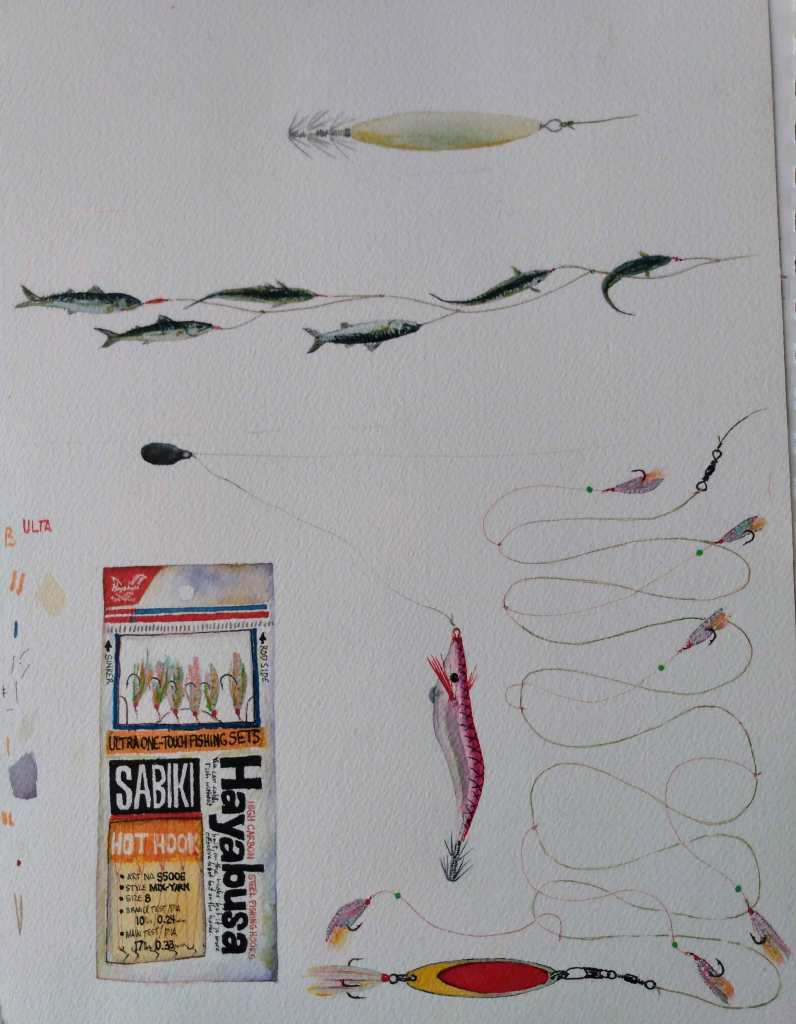
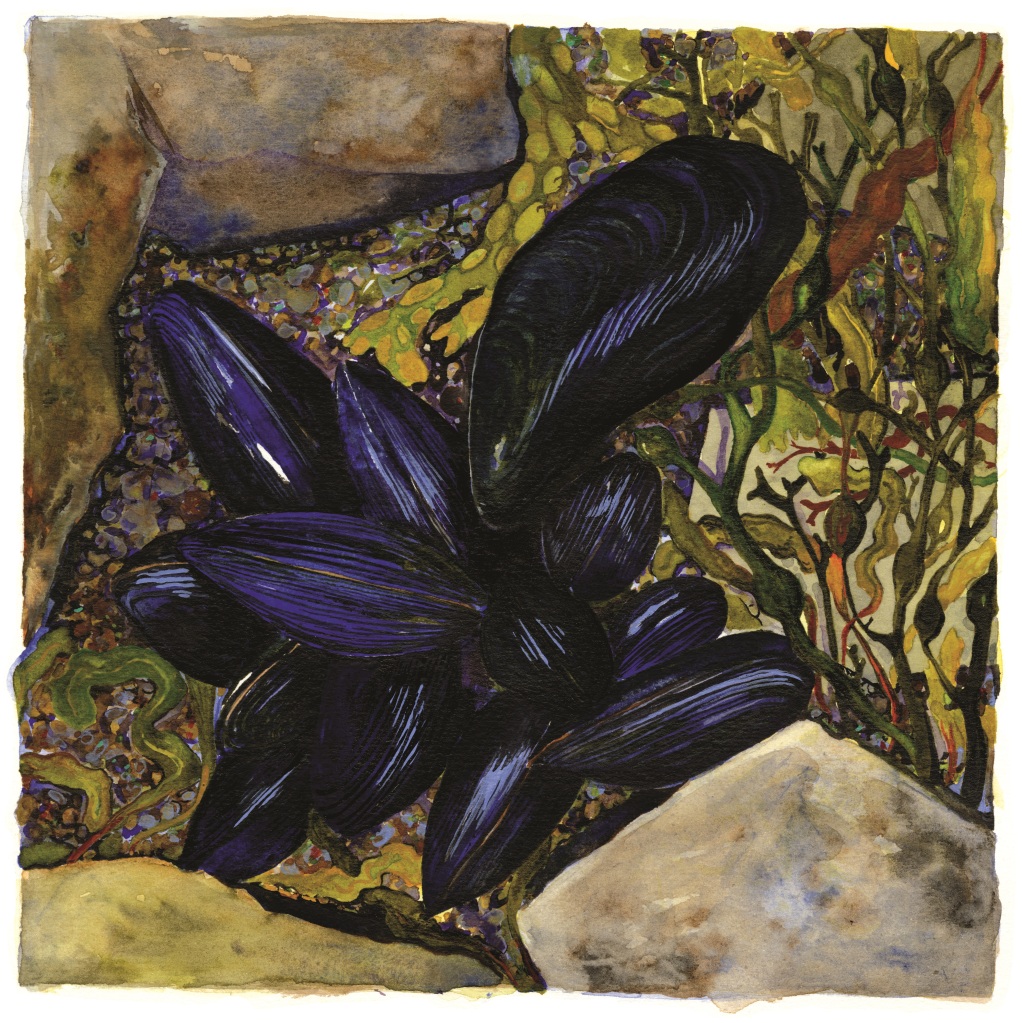
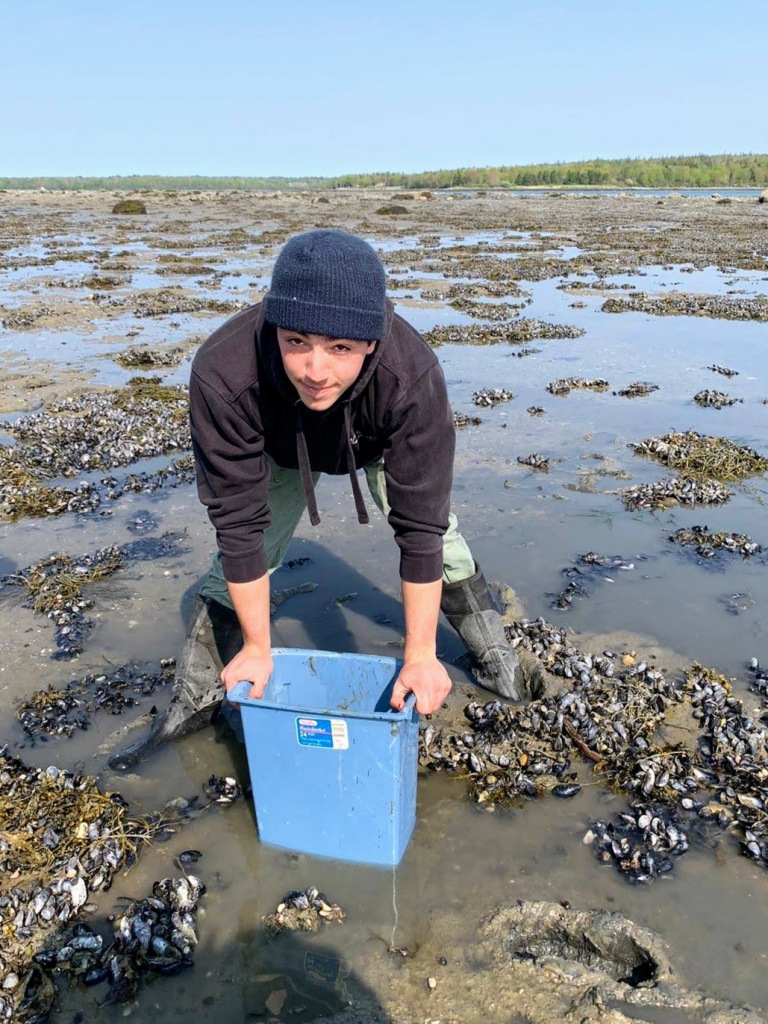
I chose this project as one that combines many of my passions, interests, and skills. In my time at the College of the Atlantic, I really enjoyed fishing and harvesting in the waters of Mount Desert Island. I have learned much and would like to share the information with others. I am also interested in visual art, communication, and design, and really enjoy painting fish. My senior project combines these two in a way that gives back to the community.
Images clockwise from the top: Lures and fish, mussels, Massimo harvesting mussels, quahogs and pasta.
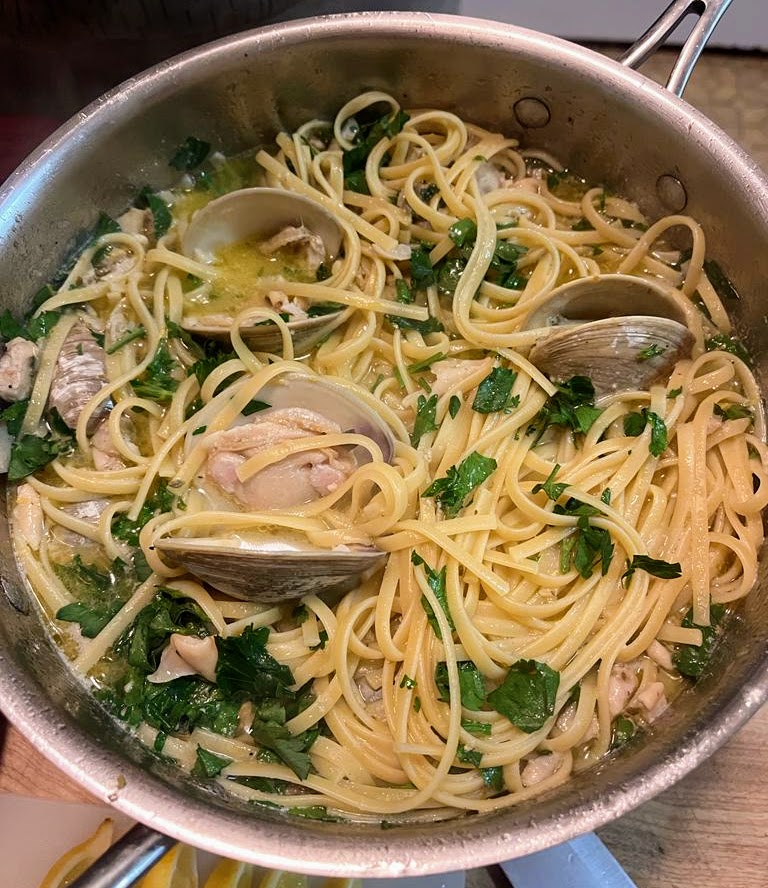
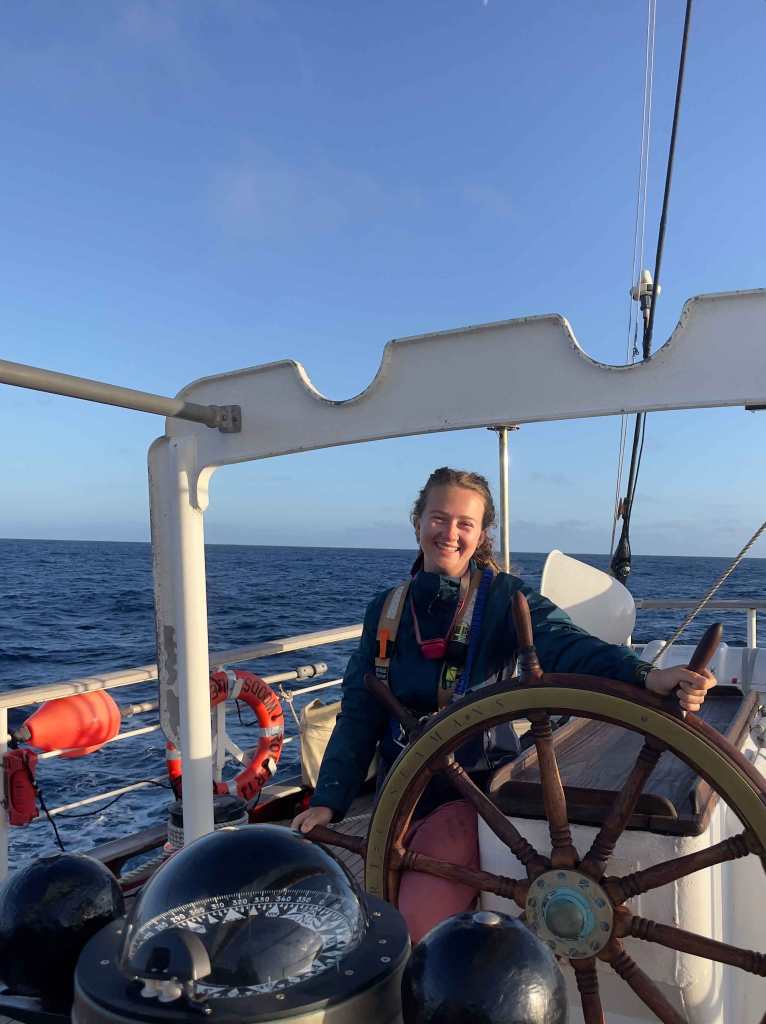
Emily Rose Stringer ’24. I love the ocean, so naturally I took Marine Biology during my first term at COA. Our marine biology course broadened my science background and encouraged me to pursue marine studies and research. As an in-person course during the pandemic (Fall 2020) this course provided me with much-needed connection. For me, marine studies have since proved to be all about connections –ecological, biological, and social. For the next two years I was a teacher’s assistant for the course. In this role I shared my knowledge of and passion for our local marine environment, and supported the course’s research efforts – primarily clam recruitment surveys and invasive green crab surveys.
Left: Cruising the South Pacific as part of Sea Semester. Below: River herring swimming upstream to spawn in lakes in Maine in the spring
Over the summers I have had three amazing internship and employment opportunities here in Maine. My first summer in 2021, I spent the season at the college’s Alice Eno Research Station on Great Duck Island. I assisted another student in her research on the regeneration and health of the spruce forest. and also helped with research and learned about the biology of Leach’s Storm petrels and gulls. The next summer I worked for a local tour boat company in Frenchman Bay. I was a naturalist on seabird and lighthouse tours, and I crafted a narrative to introduce tourists to our marine ecosystems, cultural history, and local seabirds and marine mammals. I also was a deckhand aboard a fishing tour boat out of Bar Harbor where I spent time fishing (see the cod picture below), educating tourists on our local fishes, and cleaning the catch. The majority of my work has been conducted in the Gulf of Maine, I also did a semester with Sea Education Association (SEA) in the South Pacific Ocean. I sailed on a tall ship and conducted baseline climate and oceanographic research between Fiji, Tuvalu, and Aoteoroa New Zealand. This experience broadened my knowledge of marine studies and global systems and contextualized my work at COA.

Last summer I worked as an intern for the River Herring Network (RHN) and was based downeast in Machias. I conducted zooplankton tows and went night seining for juvenile alewives on the Bagaduce waterway and helped to create an interactive RShiny portal application to visualize east coast fish runs. This app is a collaboration between the RHN and the Mid-Atlantic Fishery Management Council. The overall goal of the app is to allow visualization and sharing of east coast river herring and shad run fish count data, and to serve as a communications tool to build a greater shared understanding of the status of river herring coast-wide.
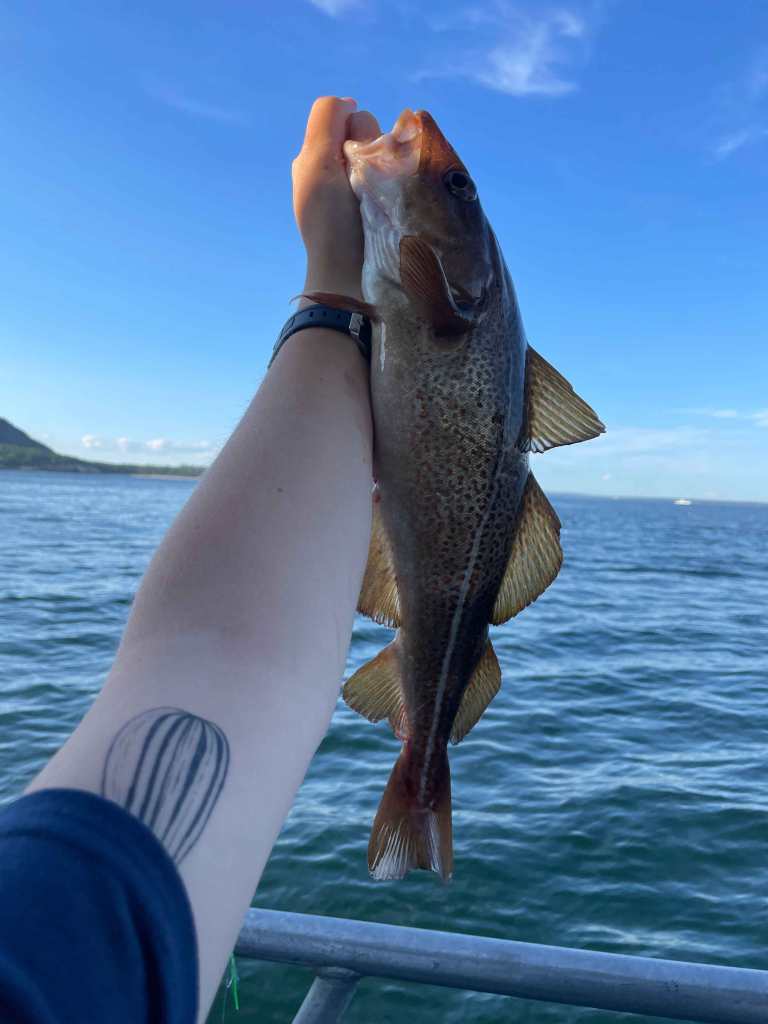

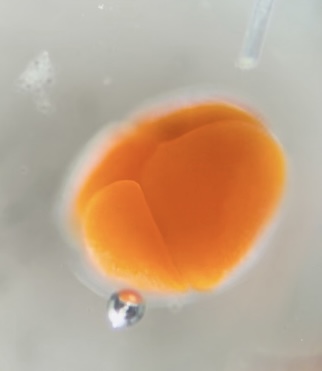
An Atlantic cod caught during a tourist fishing trip, me driving the boat and a 4-cell larvae of a orange footed sea cucumber (about the size of a head of a pin).
While at COA, sea cucumbers have been the primary focus of my research. Orange-footed sea ucumbers (Cucumaria frondosa) are a commercially important marine invertebrate present in our local waters of Frenchman Bay. Each spring the sea cucumbers spawn and the developing larvae are dispersed by current movement before settling. One cold spring day during my first year, I helped Chris and a few other marine studies students take a plankton sample at the Bar Harbor Town Pier. We were looking for sea cucumber larvae. I didn’t know what to expect, but after seeing the first sea cucumber larva I was hooked! Sea cucumber larvae are approximately the size of a poppy seed, bright orange in color, and lecithotrophic, meaning they are fatty and non-feeding larvae.. During my second and third years I assumed responsibility for the spring plankton tows and collection of larval data, and now the analysis of the entire ten-year data set is the focus of my senior project, I am currently visualizing and analyzing our project’s data.
Katie Culp ’24. My path through Human Ecology these past four years has mostly revolved around studying coastal communities, coastal resilience, and maritime anthropology through the lenses of work, food, and language. I am fascinated with storytelling and memory as they relate to people and water. I am drawn to the concept of water holding memory, culture, and traditions, and these interests have guided much of my educational path. Through my future work I wish to emphasize storytelling as a tool for preserving cultural heritage and coastal community resilience while underscoring local knowledge and lived experience on issues affecting coastlines.
Right: In Glacier Bay National Park in Alaska with the Williams-Mystic program exploring the rocky intertidal.
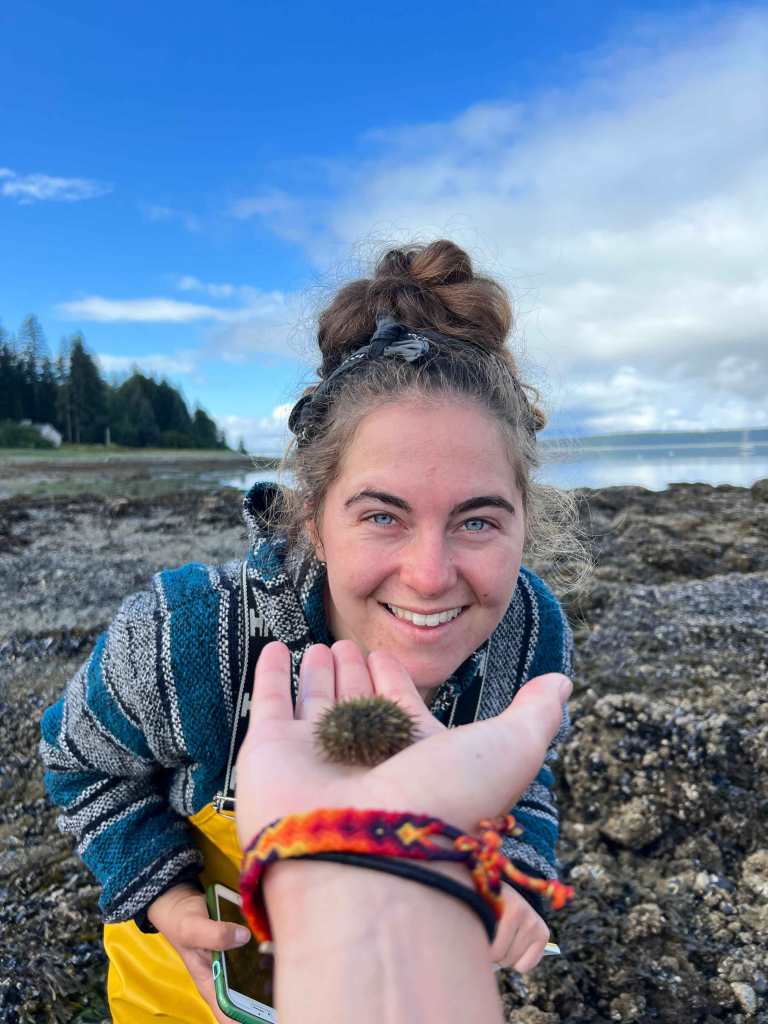
I have had the great privilege of hearing individual perspectives from a variety of different coastal community members through the oral history projects I have been fortunate to work on during my time at COA. These projects were the Frenchman Bay Oral History Project, an offshoot of the broader Mapping Ocean Stories Project (a collaborative project through Maine Sea Grant, COA, Island Institute, and The First Coast) and my senior project, an oral history collection of San Crisanto, Yucatán, MX. Through working with Mapping Ocean Stories I learned valuable tools for oral history collection and community interaction that I was able to apply to my senior project. Both of these projects aim to document the lived experience of people who have spent a significant amount of time working on the water or (in terms of my senior project) with coastal and marine resources. The Frenchman Bay Project also included a mapping component that identified historically and currently relevant places on the bay for working waterfronts and fisheries. These projects have allowed me to gain confidence speaking with a variety of people with different backgrounds and have increased my knowledge of various issues and dynamics at stake in various coastal communities. Through my experiences working in San Crisanto and on the Frenchman Bay Oral History Project, I have realized my passion for recording the stories of coastal community members as a way to learn from perspectives that are grounded in a place-based and culturally-rooted understanding of an area.
I am also interested in studying coastal communities from a policy perspective. While participating in an interdisciplinary study-away program called Williams-Mystic, I worked on a Marine Policy project where I interviewed stakeholders in the state of Maine regarding current policy measures pertaining to the North Atlantic right whale and the Maine lobster industry. I loved working on this project because I had the opportunity to learn from a variety of stakeholders about their perspectives on a critical marine policy issue for the area. I would love to continue grounding my study of coastal communities in vital conversations about the intersection between marine policy, blue food systems, and cultural heritage. I also just returned from the Sea Education Association’s Climate Change and Coastal Resilience Program in Aotearoa New Zealand this past term with four other COA students.
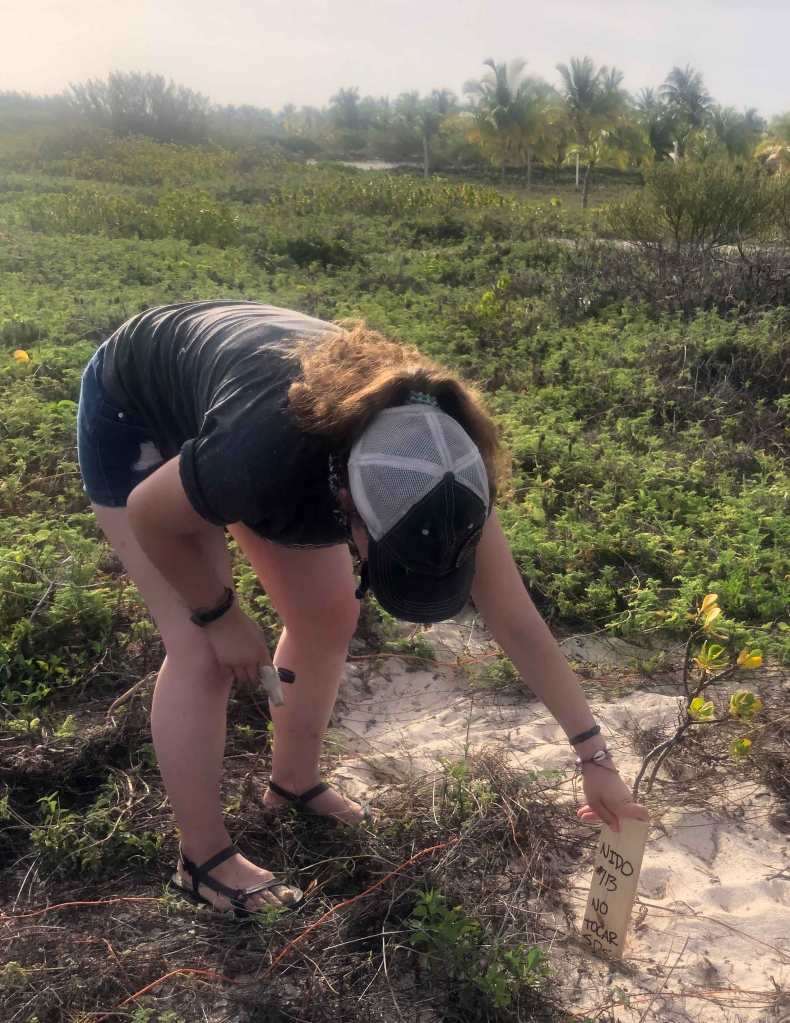
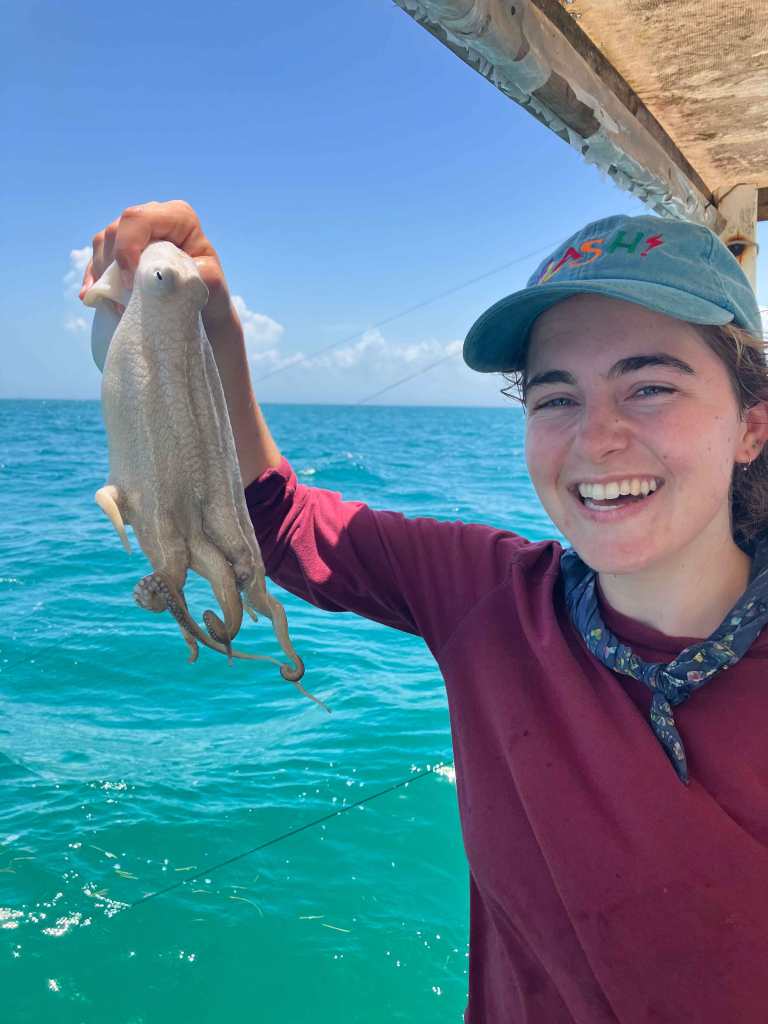
Left: On the beach in San Crisanto marking a hawksbill sea turtle nest. I was volunteering with Club de la Tortuga Telchac Puerto, a local sea turtle conservation non-profit. I fished octopus with my host family as part of the oral history collection I did for my senior project in San Crisanto. I interviewed community members about their connections to the ocean and to the community/place, and talked to people about changes they have witnessed to the ecology of the area, as well as to their jobs and ways of life. I went octopus fishing to get a feel for what is currently the main fishing industry there.
edited by COA faculty member Chris Petersen